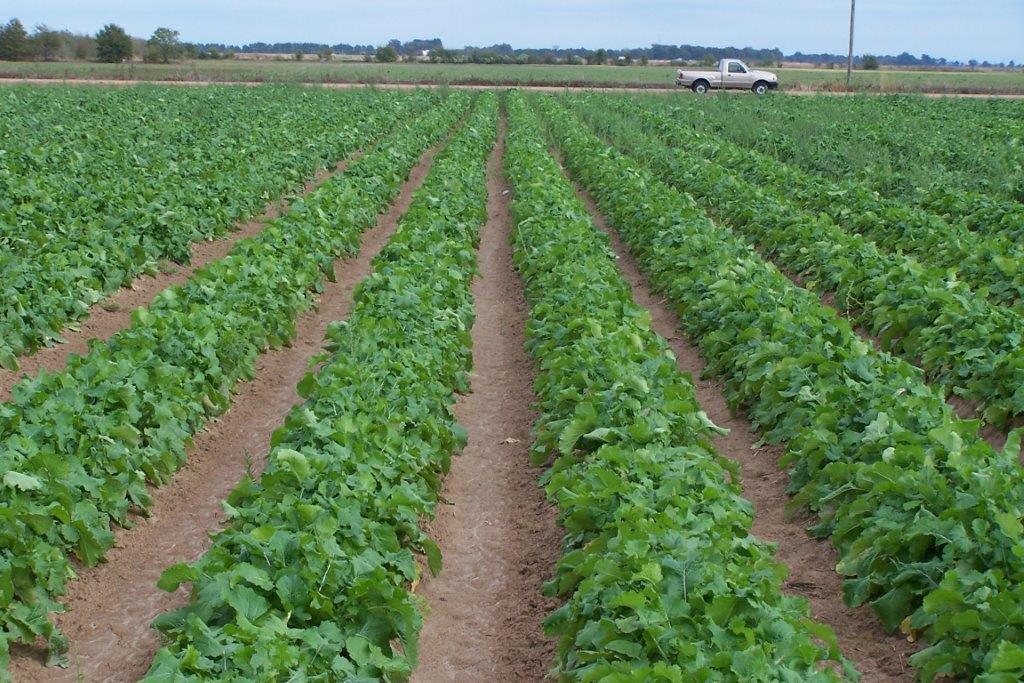Fall greens may be an alternative for small farmers
By Carol Sanders
UAPB School of Agriculture, Fisheries and Human Sciences
(437 words)
PINE BLUFF, Ark – Fall greens – mustard, turnips and collards – can be a profitable alternative for small farmers once they identify markets and have dependable labor available, said Dr. Henry English, director, Small Farm Program at the University of Arkansas at Pine Bluff.
“Marketing will determine if fresh greens production will be profitable,” said Dr. English.
An average yield between 250-300 boxes per acre (one box equals 24 one-pound bundles of greens) should be obtained with operating expenses estimated at $3,000. Most of the expenses consist of harvesting labor and purchasing boxes for packaging the greens.

“Estimated net income would be approximately $1,000 - $1,500 per acre,” said Dr. English.
Plant greens in the fall and winter. Fall plantings are normally made between late August and late September in eastern Arkansas, said Dr. English.
Greens do well on almost any soil as long as the soil is well-drained. Or, greens can be grown on beds. Avoid fields that were planted to greens, cabbage, broccoli or other crops in the crucifer (greens) family the previous year, advises Dr. English. Also, avoid fields that may have a carryover of herbicide residues.
Always fertilize greens according to soil test recommendations. A soil pH between 6.0 and 6.5 is generally recommended. If lime is needed, apply it several months before planting, if possible, said Dr. English. Boron may be needed on sandy soil to correct a boron deficiency. Producers often side-dress greens with 30-40 pounds per acre of nitrogen when plants are 2-3 inches high. Also, after greens are first harvested (cut right above the lowest second and third nodes), apply another 20-30 pounds of nitrogen to enhance growth for a second harvest.
Row spacing must be compatible with equipment. Sow 12-16 seeds per foot within the row. Collard seeds can be sewn 5-8 seeds per foot within the row if the crop is to be pulled and bunched.
With a conventional planter, use 2-3 pounds per acre of turnip seeds, 3-4 pounds per acre of mustard seeds and 2-4 pounds per acre of collard seeds. When using precision planters, plant 1-2 pounds of turnips and mustards and 2.5 pounds of collard seeds per acre.
Soil moisture is critical at planting. A two-day delay in emergence can cause a four-to six day delay in reaching appropriate growth stage. To maintain a continuous supply of greens, make a scattered planting about 3-5 days apart or when the previous planting is 50 percent emerged.
Varieties adapted to the area are mustards – Florida Broadleaf, Southern Giant Curl and Savannah; turnips – Seven Top, Shogoin, Purple Top and Topper-hybrid; collards – Vates, Georgia Southern, Champion and Top Bunch-hybrid.
Pursuant to 7 CFR § 15.3, the University of Arkansas System Division of Agriculture offers all its Extension and Research programs and services (including employment) without regard to race, color, sex, national origin, religion, age, disability, marital or veteran status, genetic information, sexual preference, pregnancy or any other legally protected status, and is an equal opportunity institution.
###
Media Contact: Mary Hightower
Dir. of Communication Services
U of A Division of Agriculture
Cooperative Extension Service
(501) 671-2126
mhightower@uada.edu
Related Links